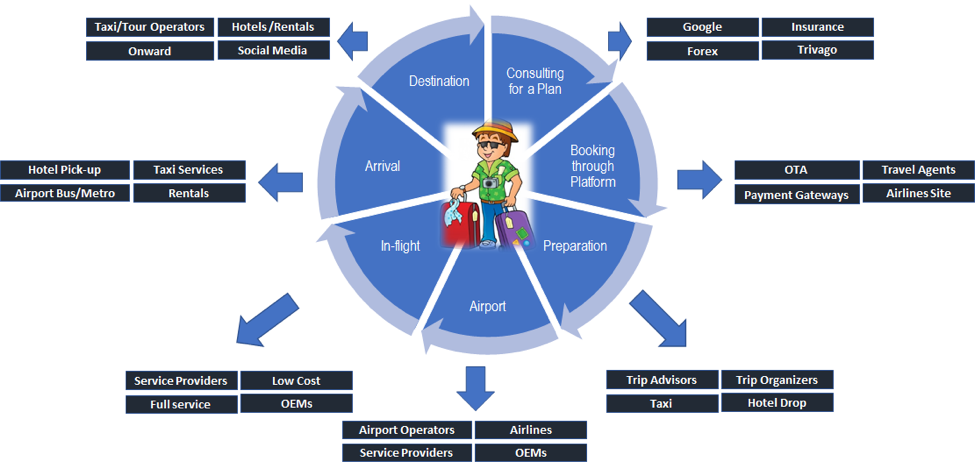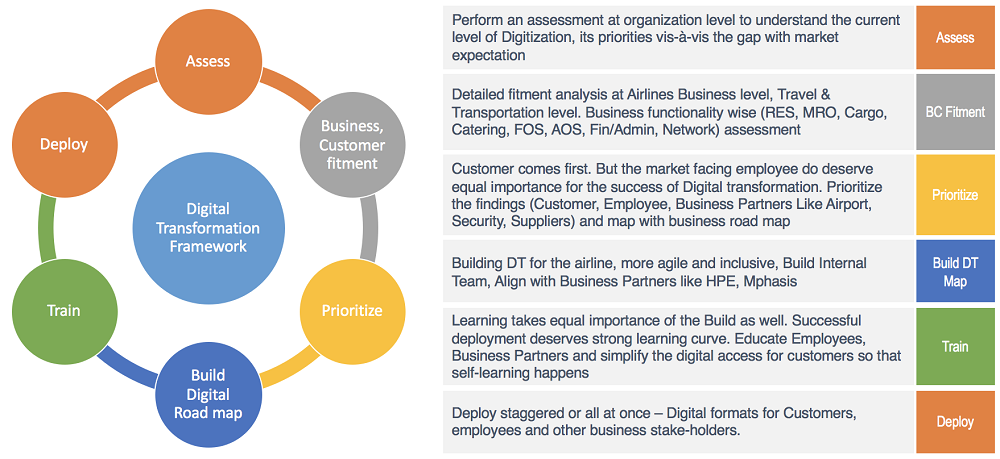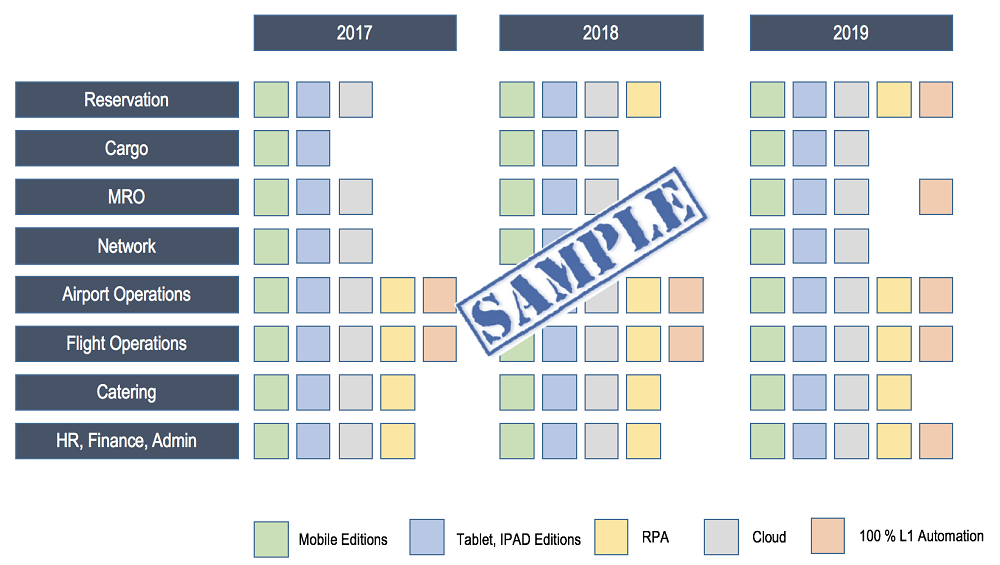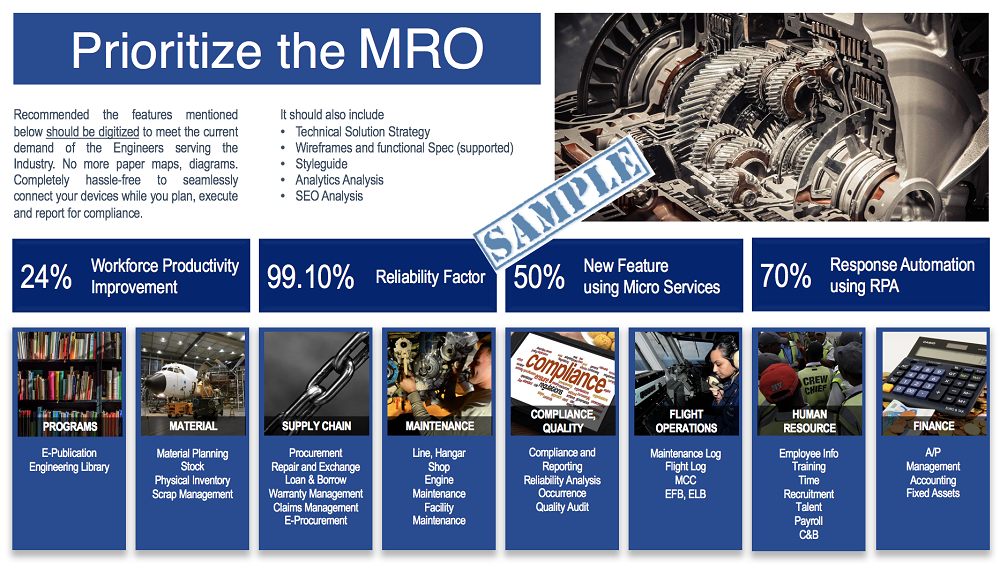Airlines are being fostered to transform their businesses, to catch up with or be ahead of technological trends, such as social media, cloud computing, mobile connectivity or big data. Considering the current pace of market penetration, we can observe a huge difference in today’s market from a decade ago. For instance, the complete travel experience of the passenger is completely digitized and matured on the digital space, to provide greater travel experience.
Although digital trends open new ways of doing business, airlines claim that the adoption of these trends are complex and slow due to internal challenges. The key to business excellence is to exploit the technological trends to the fullest, which means that the risks of investing into these new technologies must be identified.
Airlines need the right technologies to monitor the trends and making the right strategic adjustments will enable them to sustain with 'Digital Dependent' customers. It has been seen that only such airlines can survive, beat their competitors and make a profit.
Current Travel Eco-System
The travel eco-system is getting more innovative and flexible for the new age travelers. As the industry can witness, the travelers' footprints are getting digitized, with concentration ever increasing.

However, to provide such an eco-system, the airlines and TPAs are investing heavily in different forms of resources, but the reality is highly chaotic. Why? it is mainly due to the complexity, time and resourcing challenges, and above all, the ROI. Because measuring the ROI is challenging, the industry is investing on digital transformation (DT). However, the next challenge is to get its transformation Strategy right.
Airlines need the right technologies to monitor the trends and making the right strategic adjustments will enable them to sustain with'‘Digital Dependent' customers
To make airlines' life easy, below is the high-level DT framework or a structured approach that can help us move away from the chaos and start triggering the outcome.

Framework for Airlines to achieve Digital Transformation
The framework is a logical structure. To make it real and workable, we need to work on the components.

Assessment
The organization should be assessed based on its current digital deployments and readiness for the future. Business functionalities, customer demands and expectations, as it is understood/perceived by the airlines, also need to be documented. Competitor assessment and advancement on the digital space and the technology fitment of the organization should be validated.
Business Customer Fitment
We need to take the business view and customer view into consideration to be able to arrive at the delta. More than filling the gap, we need to consider the expansion plans of the airlines. Segmentation of customers should be done based on their profiles(Loyalty customers, Business Customers, Occasional travelers, etc.,) to understand how we would like to get addressed. There is also a need to come up with the ‘Stay Connected’ plans so that the customer engagement can happen routinely, to retain the business.
Prioritize
Prioritization should be performed at infrastructure and resourcing levels, and the technology prioritization should be clearly defined. There is also a need to create a queue for “Must to have”, “Best to have” and “Optional to have”. The queue should be apportioned to the customers and employees. However, it should be made incremental to show our commitment towards the transformation.
Building Digital Transformation Map
We need to have year-wise and month-wise functionality coverage once the digital transformation strategy map is defined.

Once the above components are supplied with the data, against the detailed assessment, the actual sampling can be done for the major areas. For example, given below is the prioritization for MRO DT. Every change at the business functional level should clearly articulate or show the tentative ROI, like the productivity gain, customer (employee) convenience and increase in dependency on automation rather than on the conventional model.

This is how DT can be explained in brief, although there is no standard process that one needs to adopt. Today, the world is witnessing how the technology is beating its own past.
Life is a journey, and we need to experience as we fly. And when Digital Transformation can provide such an experience, why not try it! So, let’s transform and experience!







